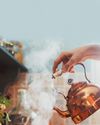CATEGORIES
Categories
Latest Stories

KEVIN SPACEY: NEW ACCUSATIONS!
Kevin Spacey was vicious after his L.A. Confidential costar Guy Pearce came out with new allegations of sexual impropriety on the set of the 1997 film, telling the 57-yearold to \"grow up.\"

TORI'S ONLYFANS PROBLEM
It seems Tori Spelling didn't know how OnlyFans - the risqué website/online peep show-makes its money.

TEDDI'S BRAVE BATTLE
AFTER FIGHTING SKIN CANCER FOR YEARS, TEDDI MELLENCAMP LEARNS SHE HAS BRAIN TUMORS.

MILLIE BOBBY BROWN: THE COST OF CHILD STARDOM
Just 11 when she first played Eleven on the Netflix megahit Stranger Things, Millie Bobby Brown had no idea how her life would change.

A FREE MAN!
\"The Glory belongs to God and God alone, Rihanna, 37, posted shortly after her partner, A$AP Rocky, was acquitted in his felony assault trial Feb. 18.

Pete & Kims REUNITED!
Exes Kim Kardashian and Pete Davidson meet up at SNL's anniversary.

MEGHAN REBRANDS Again!
MEGHAN MARKLE S DESPERATE FOR A WIN AS SHE CHANGES THE NAME OF HER LIFESTYLE BRAND JUST DAYS BEFORE HER NETFLIX SERIES’ DEBUT.

Tom & Ana WHAT'S Really GOING ON
Nearly 13 years after his third marriage imploded, Tom Cruise sparks romance rumors after he's seen out in London with Ana de Armas

The Girl Who SCAMMED THE WORLD
Belle Gibson claimed she beat terminal brain cancer using natural remedies - then her shocking secret was revealed

TIGHTWAD SHATNER WON'T BOLDLY GO TO THE ATM!
Cheap date doesn't even spend on himself

On Happy Marriage There's No Magical Formula
The legendary motocross star opens up about the secret to his longtime relationship with wife Pink

South Korea's political drama will produce waves overseas
SOUTH KOREA'S political crisis continues. After President Yoon Suk-yeol was impeached and arrested following his aborted imposition of martial law last December, the country's Constitutional Court will now decide his future. Legal experts say Yoon will soon be removed from office and sent to prison.

JENNIFER WEINER'S: The Griffin Sisters Greatest Hits
Revered for her smart, heartfelt and often funny novels featuring complicated yet lovable protagonists, bestselling author Jennifer Weiner has sold more than 11 million books, including In Her Shoes, which was made into a film starring Cameron Diaz and Toni Collette. Weiner's upcoming novel, The Griffin Sisters' Greatest Hits, out April 8, follows sisters Zoe and Cassie, who were once in a popular band that infamously broke up. Twenty years later, the world still has no idea what tore the pop stars apart. Here, an excerpt from Cassie's point of view. Pick up the next issue of FIRST (on sale March 14) for part two!

BLAKE & JUSTIN'S FUED NO END IN SIGHT
Allegations emerge that Justin Baldoni made other It Ends With Us stars feel uneasy on set, too!

OUTSMART "Sitting Sickness"
DO YOU SPEND most of your day sitting at a desk, behind the wheel or at a table? Millions of us doand our hip flexors (the muscles in the front of the hips and thighs) suffer as a result, says fitness pro Jessica Smith, creator of the online platform JessicaSmith.Fitness.

PERVY TEACHER GETS DETENTION-IN PRISON!
Sex, drugs & gunplay with special-needs teen

Live Like Reality-TV Royalty!
End of an era: Kris Jenner is parting ways with her family's longtime home, featured on KUWTK

JOANNE WOODWARD MY LIFE IN 10 Pictures
WHEN JOANNE Gignilliat Trimmier Woodward grew up in Georgia, she starred in front-porch shows at the age of 6 and, by 12, kept a list called \"How to Be a Fascinating Woman.\"

TINA LOUISE Hug YOUR CHILDREN
The Gilligan's Island alum talks about her career, family and her greatest passion

Where Has WARREN BEATTY Gone?
AFTER SIX DECADES IN THE LIMELIGHT, THE ACTORDIRECTOR HAS OPTED FOR A QUIETER LIFE AT HOME

Kanye & Bianca $2 BILLION DIVORCE?
Just days after Kanye West's wife, Bianca Censori, turned up at the Grammys naked, the controversial couple were back in the headlines, as multiple media outlets reported the pair are getting a divorce.

Capturing the humanity that war threatens to destroy
WAR HAS A WAY OF ATTRACTING STORY tellers, different kinds at different phases of the story.

10 BRILLIANT USES FOR HOT WATER
Savvy solutions with the steamy liquid

For the love of voice notes
SOMEWHERE IN THE BLUR OF 2020, AS I SLIPPED OUTside with a mask and running shoes in the early morning to walk around the block, the lilting drawl of a friend's \"Hiiiiii\" nearly stopped me in my tracks.

SWIFT BAKES BLAKE!
Sires loses top spot in Taylor’s squad

Meghan's BIG Gamble
Meghan Markle's latest update to her lifestyle brand sparks confusion and scorn

RESILIENCE, DIVINE ORDER & Speaking Your Truth with actress, director and Beyond the Gates star TAMARA TUNIE
Beloved for decades as Jessica Griffin on As the World Turns, actress Tamara Tunie recently made her grand return to daytime TV in Beyond the Gates-the first network soap opera to premiere in more than 25 years.

Matthew's Shock Death TRAGIC NEW DETAILS
No one saw it coming.

Lindsay: HOW MOTHERHOOD CHANGED ME
Lindsay Hubbard is known for getting activated.

THE RISE OF GERMANY'S FAR RIGHT
Alice Weidel's AfD party is making gainswith a boost from the Trump Administration
